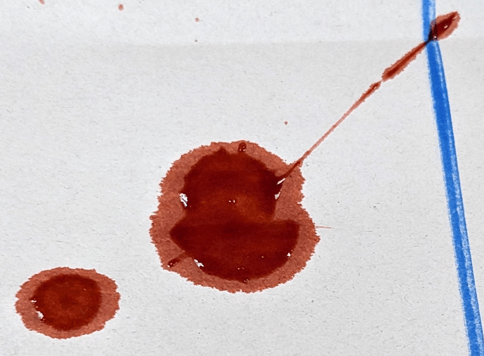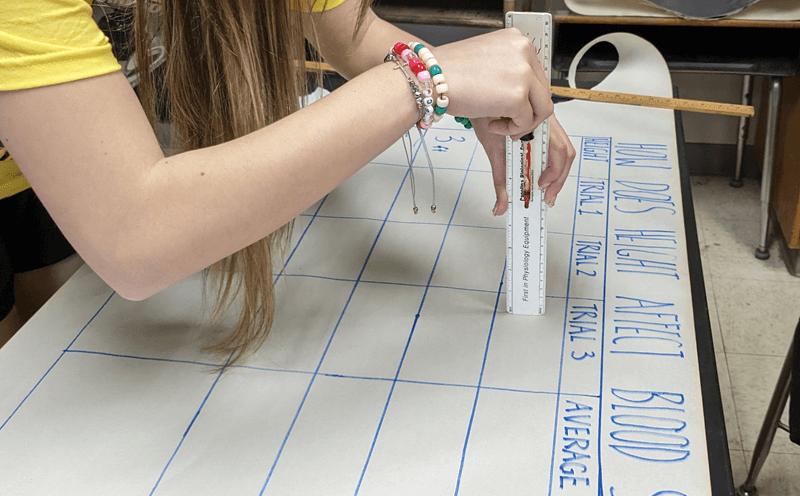Bloodstain pattern analysis is a branch of forensic science that examines bloodstain patterns at crimes scenes. The size, shape, and distribution of bloodstains provides clues about a crime or accident.

- Area of origin (or position of the victim)
- Type and direction of impact
- Motion analysis showing how the victim and assailant moved
- Objects that produced the bloodstain patterns (weapons)
- Number of blows or shots that occurred
- Position of the victim and the assailant
I used a variation of this lab from the Trendy Science Teacher. I modified a few details, like limiting to 7 foot drops, because of room limitations. Overall, students were able to clearly see how changing the height of the drop affected the diameter. I also added a few discussion questions for students to answer. I did not give students a handout, and used Google slides for instructions.
Warning – this lab can get messy!

Overview of the Activity
1. Students draw a grid on butcher paper using a meter stick. Tell students to make the grid as large as the paper. I cut it to about the size of their lab tables. They will also need thick markers to draw the grid.
( Butcher paper is a cheap alternative to posterboard, I keep a roll for various projects and even use it for animal cage lining.)
2. Students use a pipette to drop fake blood from different heights.
Distribute blood to each group in test tubes with lids. Each group will also need a 3 ml pipette.
I use theater blood, but you can make your own. Students use the meter stick to drop from different heights. They will need to stand on a chair to get the 7 foot drop reading.
It can be difficult to get the drops exactly in the squares, but they don’t need to be perfect!
3. Next, students measure the diameter of each of the drops using a ruler. Then, they calculate the average for each height.
4. Students answer the three discussion questions on the paper (or attach another paper).
You can also discuss other elements of blood spatter analysis. These include analyzing “spines” and “satellites” that occur when the drop hits a surface at an angle.
Anatomy Unit on Blood
In my anatomy class, students learn about blood before we cover the circulatory system. I also include topics from the immune system when talking about white blood cells and immune response. We also review genetics and how it relates to certain blood disorders, such as hemophilia and sickle cell. Finally, students have the option to test their own blood and determine their blood type.
Guided Notes: Red Blood Cells, White Blood Cells, Platelets
Slides: Red Blood Cells | White Blood Cells | Platelets
Blood Case Studies (Hematology)
Blood Disorder Genetic Problems – sickle cell, hemophilia

